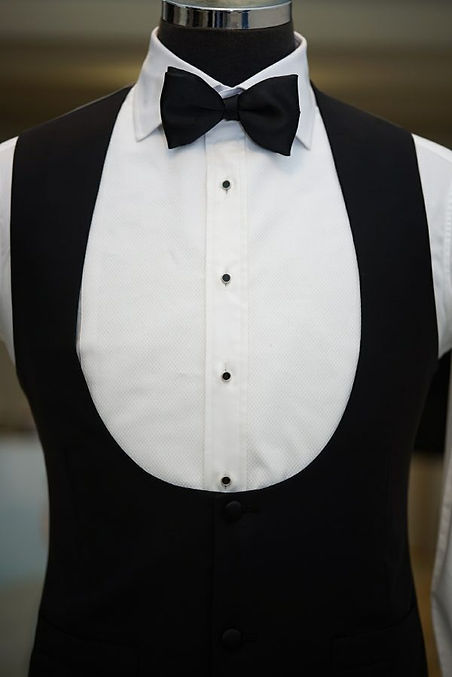
Nothing inspires a sense of occasion, of elegant festivity like the tuxedo. It is a creature that evolved to be a part of the grand balls of yore, either in ballrooms on land or on cross-continental ships at sea. The cloth traditionally used was woven in the barathea weave which gives a slight textured sheen. The glossy black lapels in silk satin suggest special occasion wear---silk is too fragile for daily use.
Today, the tuxedo is worn when the invitation indicates black tie attire. Typical occasions are industry awards nights and company annual dinners. Also, grooms may wear the tuxedo to lend the wedding dinner special significance and extra elegance. In popular culture, James Bond makes heavy use of the tuxedo. In place of the barathea cloth, the finer and even glossier faille is commonly used today among high end tailors. Lapels are still commonly silk-wool satin, or for a textured alternative, grosgrain.
Other items complete the sleek, inky dark look. A bowtie to match the lapels. A shirt with stud buttons on the front. French cuffs with onyx cufflinks. Patent leather shoes.
At Jeremy Tok Tailor, we favour a more glamorous cut for the tuxedo but keeping all the traditional features. Wider lapels than average for the peak lapels, and a visually bottom heavy lapel if shawl. Breast pocket welt and hip pocket jets are in the same wool cloth instead of satin to keep with tradition. Buttons are cloth-covered in the same material as the lapels. There are no vents on the jacket.
Instead of the clumsy cummerbund, we favour a horseshoe vest. It wears more securely and is more elegant.
We cut and construct our tuxedos with the same care and techniques as our suits.


A shawl lapel tuxedo in the making. Grosgrain facings.
Link to the wikipedia page on black tie: https://en.wikipedia.org/wiki/Black_tie


